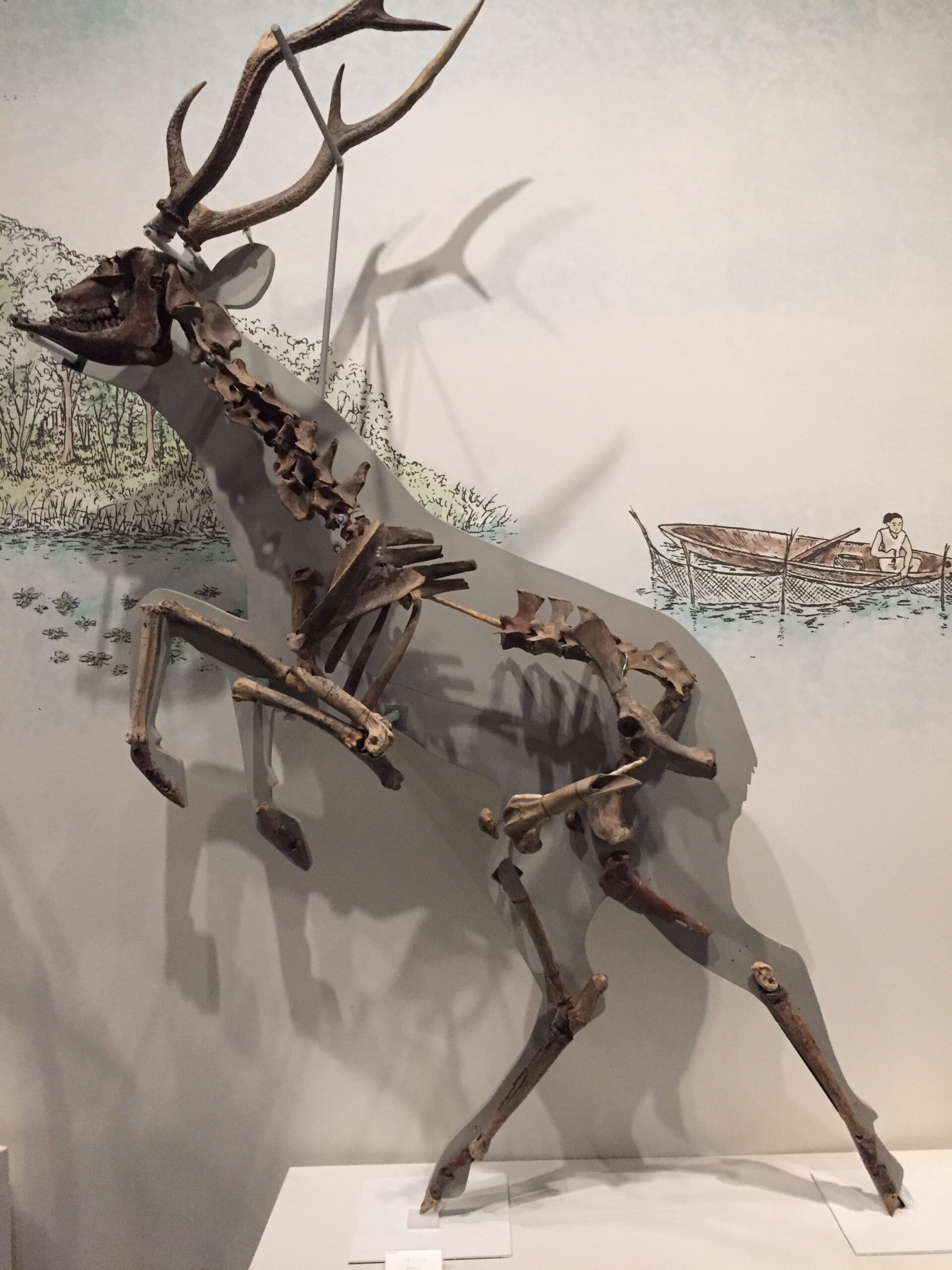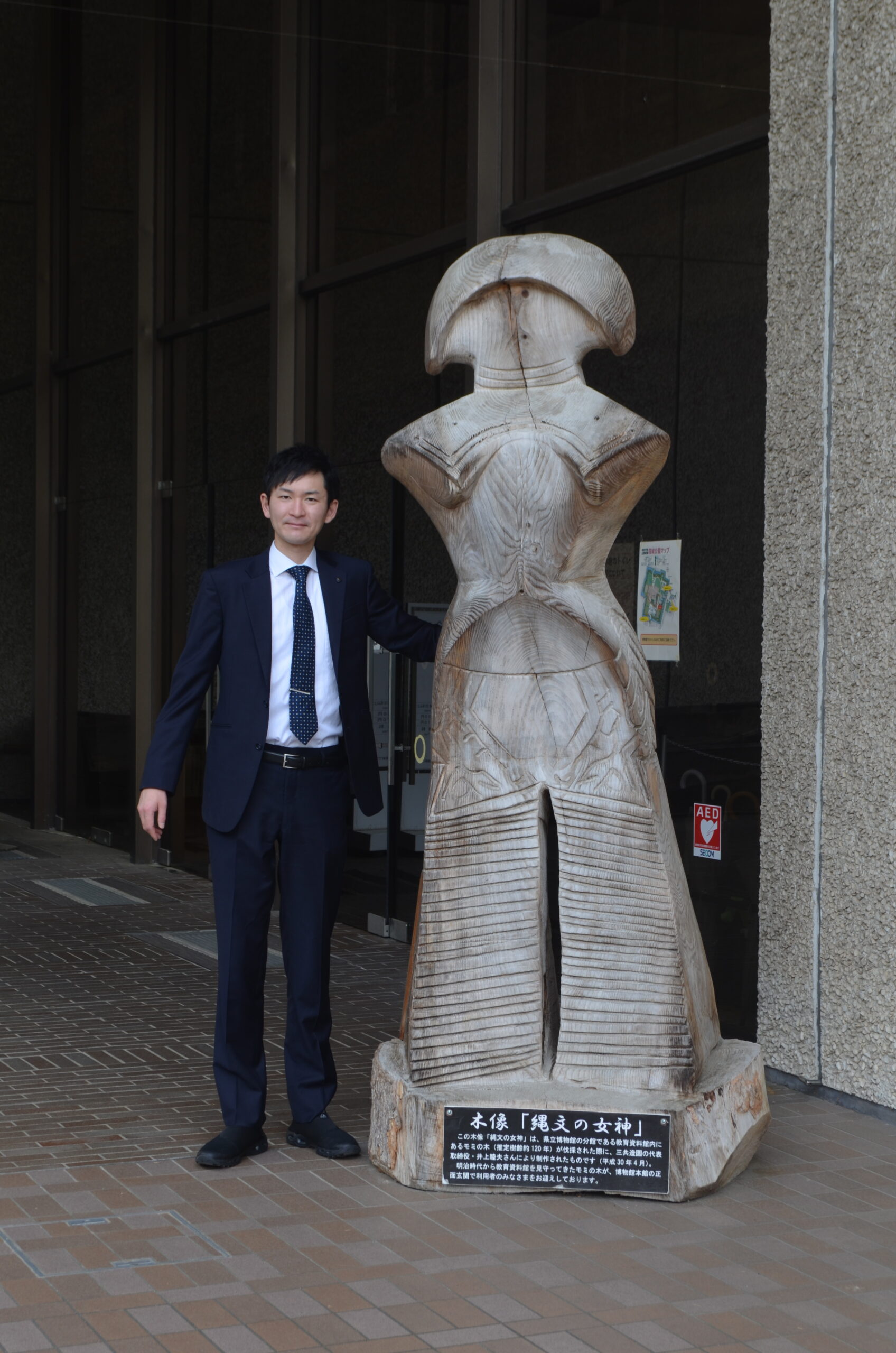20.7.2024
In the winter of my freshman year in college, I heard the term "zooarchaeology" for the first time in a special lecture. In that lecture, I was impressed to hear that not only pottery and stone tools excavated from archaeological sites, but also animal remains could reveal the lives of people in the past. From that moment on, I think I began to develop an interest in this field of study.
Later, through practical training in the archaeology laboratory and research trips to Fukui Prefecture, I had the opportunity to gain a deeper understanding of the importance of zooarchaeology. In particular, my visit to the Torihama shell midden in Fukui Prefecture was particularly memorable. The Wakasa Mikata Jomon Museum and the Fukui Prefectural Wakasa History Museum both provided detailed explanations of the Torihama shell midden, and I learned about the pioneering research being conducted on the subsistence of the Jomon period. Of all the exhibits, the one that struck me the most was the permanent display of the remains of sika deer (photo). In my hometown (Yamagata), sika deer do not inhabit, and the first deer I saw was a strange creature that had been excavated from an archaeological site and turned into a skeleton.
This encounter further deepened my interest in zooarchaeology and led me to begin learning about it. I wanted to learn in detail how the Jomon people hunted sika deer, so I began my research journey with guidance from scholars, including Mr. K from the Wakasa Mikata Jomon Museum and researchers of shell mounds in the Hokuriku region., Then, Thanks to the opportunity to assist with the research of senior student H at Keio University, I was able to join Professor S's laboratory and continue my studies as a graduate student.
My world has expanded since I began my path in zooarchaeology, and it has been full of new discoveries and learning. I have been able to meet many people who are engaged in research and study, seriously and sometimes with a grin on their faces, and we work hard together.
I would like to continue my exploration and contribute to the well-being of people living in the present by uncovering the activities of people in the past.
Later, through practical training in the archaeology laboratory and research trips to Fukui Prefecture, I had the opportunity to gain a deeper understanding of the importance of zooarchaeology. In particular, my visit to the Torihama shell midden in Fukui Prefecture was particularly memorable. The Wakasa Mikata Jomon Museum and the Fukui Prefectural Wakasa History Museum both provided detailed explanations of the Torihama shell midden, and I learned about the pioneering research being conducted on the subsistence of the Jomon period. Of all the exhibits, the one that struck me the most was the permanent display of the remains of sika deer (photo). In my hometown (Yamagata), sika deer do not inhabit, and the first deer I saw was a strange creature that had been excavated from an archaeological site and turned into a skeleton.
This encounter further deepened my interest in zooarchaeology and led me to begin learning about it. I wanted to learn in detail how the Jomon people hunted sika deer, so I began my research journey with guidance from scholars, including Mr. K from the Wakasa Mikata Jomon Museum and researchers of shell mounds in the Hokuriku region., Then, Thanks to the opportunity to assist with the research of senior student H at Keio University, I was able to join Professor S's laboratory and continue my studies as a graduate student.
My world has expanded since I began my path in zooarchaeology, and it has been full of new discoveries and learning. I have been able to meet many people who are engaged in research and study, seriously and sometimes with a grin on their faces, and we work hard together.
I would like to continue my exploration and contribute to the well-being of people living in the present by uncovering the activities of people in the past.

Exhibition of sika deer at the Fukui Prefectural Wakasa Museum of History
About the author
Koyo SATO
Profile
Born in Yamagata Prefecture in 1994.
Currently enrolled in the doctoral course at Keio University Graduate School.
After engaging in excavation and planning at the Shiga Prefecture Association for Cultural Heritage Conservation for four years, he has started working as a curator (archaeology department) at the Yamagata Prefectural Museum since 2024, conducting archaeological research and educational outreach.
His research theme is "The subsitstence dynamics of the Torihama shell mound based on zooarchaeological methods," and he is working on the reconstruction of the hunting seasons, resource use, and paleodiet of the Japanese shika deer in the Jomon period.
Publications
The Season of Death of Japanese Deer Remains Excavated from Torihama Shell Mound. Zooarchaeology, 38, Japanese Society for Zooarchaeology, 2021.
Reconstructing diets of hunted sika deer from Torihama Shell Midden site (ca. 6,000 years ago) by dental microwear texture analysis. Frontiers in Ecology and Evolution. 2022. URL
Deer antlers from Torihama shell mound: Focusing on excavated materials from the 1984 and 1985 surveys. Torihama Shell Mound Research, 7, Fukui Prefectural Wakasa Museum of History, 2023.
Currently enrolled in the doctoral course at Keio University Graduate School.
After engaging in excavation and planning at the Shiga Prefecture Association for Cultural Heritage Conservation for four years, he has started working as a curator (archaeology department) at the Yamagata Prefectural Museum since 2024, conducting archaeological research and educational outreach.
His research theme is "The subsitstence dynamics of the Torihama shell mound based on zooarchaeological methods," and he is working on the reconstruction of the hunting seasons, resource use, and paleodiet of the Japanese shika deer in the Jomon period.
Publications
The Season of Death of Japanese Deer Remains Excavated from Torihama Shell Mound. Zooarchaeology, 38, Japanese Society for Zooarchaeology, 2021.
Reconstructing diets of hunted sika deer from Torihama Shell Midden site (ca. 6,000 years ago) by dental microwear texture analysis. Frontiers in Ecology and Evolution. 2022. URL
Deer antlers from Torihama shell mound: Focusing on excavated materials from the 1984 and 1985 surveys. Torihama Shell Mound Research, 7, Fukui Prefectural Wakasa Museum of History, 2023.

